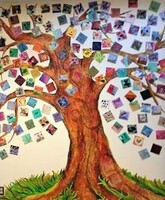Planning and Student Placement for 2023-24
Planning
We take student placement very seriously and go through a meticulous process. At the initial stage in our planning, we anticipate the enrolment of our students. Based on this projected number of students, we will receive our staffing entitlement.
Once an organization has been decided upon and teachers have been assigned a class within that organization, the process of assigning students to classes begins. Our class placement process ensures that thoughtful consideration of each child's social, emotional, and academic needs are aligned with the needs to create balanced and effective learning environments. The assignment of students to classes is decided by a team, which includes the child's current teacher, possible teachers for the coming year, specialists such as the learning services teacher, school counsellor, and the school administration. This professional team considers each placement carefully as they create classes that include a wide range of students who learn in a variety of ways.
Once we have all of the information available to us, the following decisions can be made:
- the number of divisions at each grade level
- the number of students in each class
- where classes will be blended (4/5, 6/7, etc.)
- the amount of time provided to other disciplines in the school such as fine arts
- what grade levels teachers will request to teach
Student Placement
Student placement is a very complex process that we take very seriously. We take a collaborative approach when planning for student placement with all stakeholders (parents, students, staff) having a voice in the process.
- *Parent Input Form (optional): parents can download the form and send an electronic copy to blaine.broderick@sd6.bc.ca or print it off and drop it at the office. Please note the due date of parent input is May 31, and it may not be possible to meet all input requests as classes are determined.
- Student Feedback: in late May, we ask students to choose up to five students who they work well with (and not their best friend). We are unable to make any promises, and we do our best to accommodate students' lists by placing them with one or two students.
- Teacher/Specialists: our school staff and specialists (such as counselor, administration, learning service teachers, etc.) place students and review lists several times up until the opening day of the new school year.
*Please note that the Parent Input for Student Placement form will not be accepted if names of staff members are used in your input, and the form will be returned to the sender with a reminder of the placement criteria. Our goal is to meet the needs of all students in order to maximize their growth as learners.
In addition to individual circumstances, criteria considered in the placement process include, but is not limited to, the following:
- Workable instructional groups considering:
- the child's academic needs and strengths
- teaching and learning styles
- the child's work habits
- Positive social groups considering:
- placements where a child can work positively and productively with other children in the class
- peer support or conflicts
- establishing the presence of positive leaders in each class
- ratio of grades in blended classes
- Balanced classes considering:
- gender
- students with special needs identifications
- students who are English language learners
- academic, social, and emotional needs and abilities
- leadership abilities
- Other Information considered:
- the past history of students in blended or single grade classes
- school-based resource team recommendations
A Note on Blended Classrooms
All classrooms have a range of abilities within in them; however there are many benefits to having multi-grade classes. Blended classrooms create diverse yet balanced groupings of students of mixed ages with different abilities and they promote enhanced social and emotional skills. Research supports that the blended classrooms can also yield higher language development and reading skills as younger students are challenged and older students act as peer mentors. Further, having blended classrooms fosters a culture of caring and creates an environment where all students needs are being met, where they are at, through differentiating instruction for all learners.
When teaching a blended classroom it becomes evident that our curriculum lends itself to this scenario beautifully. With a focus on curricular competencies, and a holistic approach to content outcomes, a teacher is able to meet the needs of all students by differentiating learning to ensure all grade level needs are met.
Link to Parent Input Form - form must be downloaded and emailed to blaine.broderick@sd6.bc.ca .
